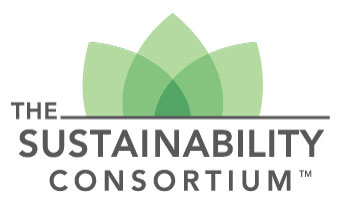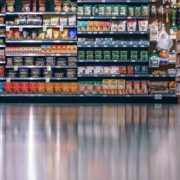Sustainability by Design – Leveraging Industry Tools to Improve Packaging Sustainability

By Sarah E. Lewis, Nina Goodrich, Adam Gendell, and John H. Kester III
Imagine that you are the head of sustainability for a company that manufactures a wide array of personal care products, including lotions, make-up, soaps, and wipes. Your company has worked to build sustainability into its brand by building transparency into your sourcing practices and the ingredients used, as well as by reporting progress on how your company has worked to reduce the impacts associated with manufacturing the products you make. Your CEO is interested in working to further improve the sustainability of the company’s products by focusing on the packaging of the products – the materials used in design, the optimization of the packaging design, as well as the recyclability of the packaging. This new interest is driven by the fact that your company’s major retailers are demanding innovative approaches to packaging in order to continue selling your products. This is driven, of course, by the fact that consumers are pushing retailers to sell products with more sustainable packaging. While you’ve heard of resources and organizations that work on packaging, you’re unsure about how these all fit together and whether or not these will help you respond to your retailer needs.
This scenario is becoming more and more common across the industry – brands looking to uphold or build their reputations in sustainability, trying to respond to demand across the supply chain for improved practices, and trying to understand how to navigate sustainability initiatives and tools. Here we provide an example of how a sustainability professional, packaging design engineer, or compliance professional can leverage two internationally recognized initiatives in sustainability to help learn about new packaging innovation, better understand the basis for that innovation, and help them measure and report progress to their retail customers.
The first is The Sustainable Packaging Coalition® (SPC), a membership-based collaborative led by an independent non-profit that believes in the power of industry to make packaging more sustainable. The SPC uses an objective life-cycle-based approach and works in a constructive atmosphere to provide thought leadership and bring its members together to strengthen and advance the business case for more sustainable packaging.
The SPC’s flagship initiative is How2Recycle, the first and only comprehensive recycling labeling system for packaging in the U.S., which was created after SPC members identified the critical need for an accurate, consistent on-package labeling system that aligns with the Federal Trade Commission’s Guides for the Use of Environmental Marketing Claims. Now used on thousands of products in the marketplace, the How2Recycle label is also catalyzing design changes in packaging by sparking internal conversations that broaden perspectives on material and format choices for packaging and provide avenues for industry to measure and improve recyclability.
The second is The Sustainability Consortium® (TSC®), a global organization dedicated to improving the sustainability of consumer products. TSC Members and partners include manufacturers, retailers, suppliers, service providers, NGOs, civil society organizations, governmental agencies and academics, each bringing valuable perspectives and expertise. TSC convenes these diverse stakeholders to work collaboratively to build science-based decision tools that address sustainability issues that are materially important throughout a product’s supply chain and lifecycle (TSC, 2016).
The work of these two organizations is complementary because the tools can be used to accelerate progress in packaging sustainability while also gaining business growth opportunities. The tools are all there, ready to use, it is just a matter of putting the pieces together. SPC has created an extensive body of work on the specific practices that can be used to improve packaging sustainability. They have created reports summarizing common materials used in packaging, as well as design guides to help build efficiency, recyclability, and recycled content into one’s packaged product. They have also created indicators and metrics that can be used to assess progress towards a more sustainable package. These resources are all available on their webpage and can be used with internal product design teams, manufacturing facility managers, as well as customers wanting to know more about how your product’s package is made. When a company, like the personal care one described above, has referenced SPC’s guides and has worked to create highly innovative strategies to improving the sustainability of their product’s packaging design, they want to be able to communicate that progress to customers to gain market access and recognition. They need their retailer to ask them about their progress and give incentives to do more.
In order to build those demand drivers, The Sustainability Consortium works with retailers and suppliers to create consistent product sustainability metrics that can be used across retailers. This business process of collecting sustainability specific supply chain data provides a market signal for the importance of improving product sustainability, including the improved sustainability of a product’s packaging. The Sustainability Consortium has created a portfolio of Toolkits that provide a summary of environmental and social hotspots for products, as well as key performance indicators (KPIs) that facilitate the measurement and reporting of progress on hotspots material to a product category. In cases where packaging is material (a hotspot) for a product, two packaging KPIs are integrated into part of the set of 15 KPIs for the overall product. The two packaging KPIs capture the overall optimization of the packaging system and the recyclability and recycled content for the packaging of the product. These two KPIs were developed by TSC’s packaging working group, a diverse set of stakeholders with expertise in packaging. The packaging KPIs are part of a product’s Toolkit and are available on the TSC webpage.
Where these two systems come together is at the buyer-supplier conversation of the supply chain. Retail buyers from retailers like Walmart, Kroger, and Amazon are using TSC KPIs to assess progress on key sustainability issues including progress in packaging. As a result, there is a consistent demand across retailers for specific information pertaining to their product’s packaging. In response to this demand for improvement, suppliers are eager to innovate and improve their packaging sustainability. To help them make progress, they can use the work of SPC to identify strategies for making improvements and then report that progress to buyers through TSC KPIs.
With more and more consumers demanding improved sustainability in the products they buy, it is important that organizations such as SPC and TSC stay closely connected to ensure that the content being developed is aligned and interoperable for companies to use. To learn more about how to use these systems or to support these initiatives, contact Sarah Elaine Lewis of TSC or Nina Goodrich of SPC.

Sarah E. Lewis

John Kester III

Nina Goodrich





